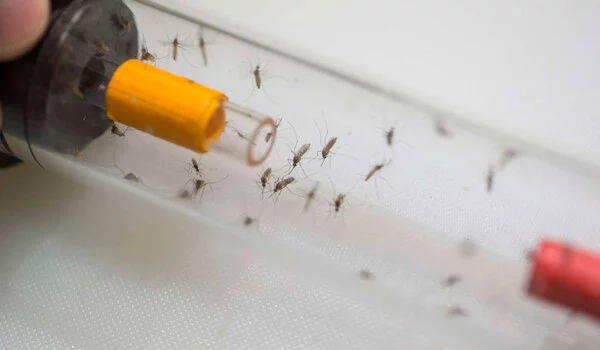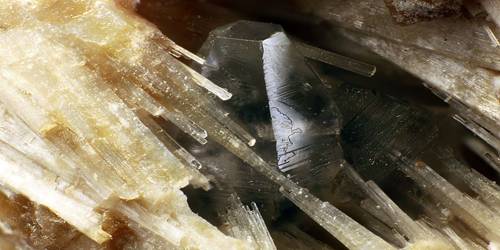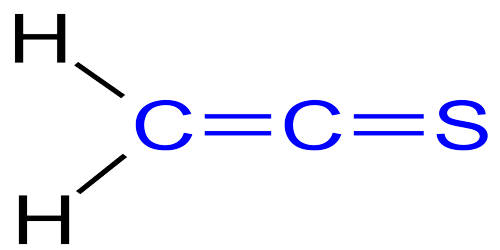Mosquitoes currently kill over a million people each year. Malaria, dengue fever, Rift Valley fever, and the Zika virus are all spread by these venomous insects and are estimated to affect up to one billion people in 109 countries across Africa, Asia, and Latin America. Climate change may alter the transmission dynamics, geographical range, and socioeconomic drivers of mosquito-borne diseases by increasing rainfall, humidity, and temperatures.
According to a new study by an international team of researchers, increases in three climate factors — temperature, rainfall, and ocean warming — predicted mosquito population growth in Sri Lanka for the next one to six months. The findings, published in The Lancet Planetary Health, can inform the design and timing of programs to limit the spread of mosquito-borne diseases like dengue.
Dengue fever, which has become a major public health problem in Sri Lanka, affects nearly half of the world’s population. Because developing a safe and effective dengue vaccine has proven difficult, mosquito population control is regarded as the most effective strategy for preventing the virus’s spread.
These climate factors have the potential to serve as predictors of mosquito activity at different times, allowing us to quantify the risk and implement effective mosquito control interventions before a dengue epidemic emerges.
Prasad Liyanage
Dengue transmission patterns in Sri Lanka closely follow the country’s monsoonal rainfalls, with peak transmission occurring in July following the southwest monsoon and a smaller peak occurring in December to January following the northeast monsoon. Although research has found a link between some climate variables and the quantity, feeding patterns, and lifespan of Aedes mosquitos, which transmit dengue fever, the relationship between Aedes mosquito activity and climate remains unknown.
“Dengue transmission is expected to intensify due to climate change. If we can use climate and weather data to predict seasonal patterns of mosquitos, this timely information would allow public health authorities to proactively manage mosquito control operations,” said study author Yesim Tozan, assistant professor of global health at NYU School of Global Public Health.
The researchers aimed to quantify the effect of climate on Aedes mosquitoes in Kalutara, a district in southwestern Sri Lanka with a persistent, high presence of dengue. They measured three monthly weather variables — rainfall, temperature, and Oceanic Niño Index — from 2010 to 2018. The Oceanic Niño Index measures whether waters in the tropical Pacific Ocean are warmer or cooler than average, with El Niño and La Niña phases triggering changes in weather. Three El Niño events, or unusually warm ocean temperatures, occurred from 2010 to 2018.

Mosquito-borne diseases must be contained and prevented by public health systems that have little experience with them. Other interventions to reduce the impact of mosquito-borne diseases, such as vaccine development and treatment, should be prioritized. Along with these actions, there will be an ongoing need for research and modeling that considers the likely impact of climate change on disease dynamics at the local scale, variations in weather and climate events.
Finally, current and future interventions to prevent an increase in mosquito-borne diseases as a result of climate change will need to improve both the environmental and living conditions of at-risk populations.
The climate variables were then compared to systematically collected mosquito surveillance data in Kalutara, including measurements of Aedes mosquitoes and larvae found in homes and outdoor water containers.
Mosquito activity was predicted by all three climate variables, but with different time lags. More rainfall predicted a higher prevalence of mosquitoes within the same month, as it often resulted in outdoor containers filling with water, creating mosquito breeding sites. Hotter weather was linked to an increase in mosquitoes one to two months later. Warmer ocean temperatures caused by El Nio events predicted an increase in mosquitoes five to six months later.
“These climate factors have the potential to serve as predictors of mosquito activity at different times, allowing us to quantify the risk and implement effective mosquito control interventions before a dengue epidemic emerges,” said study lead author Prasad Liyanage of the Sri Lanka Ministry of Health and Ume University in Sweden, who will join the NYU School of Global Public Health as a postdoctoral associate this fall.
“Tracking El Nio events has the added benefit of predicting the seasonal prevalence of Aedes mosquitoes with a six-month lead time, which could provide opportunities to issue early warnings on mosquito prevalence for the entire dengue season,” Tozan added.
















